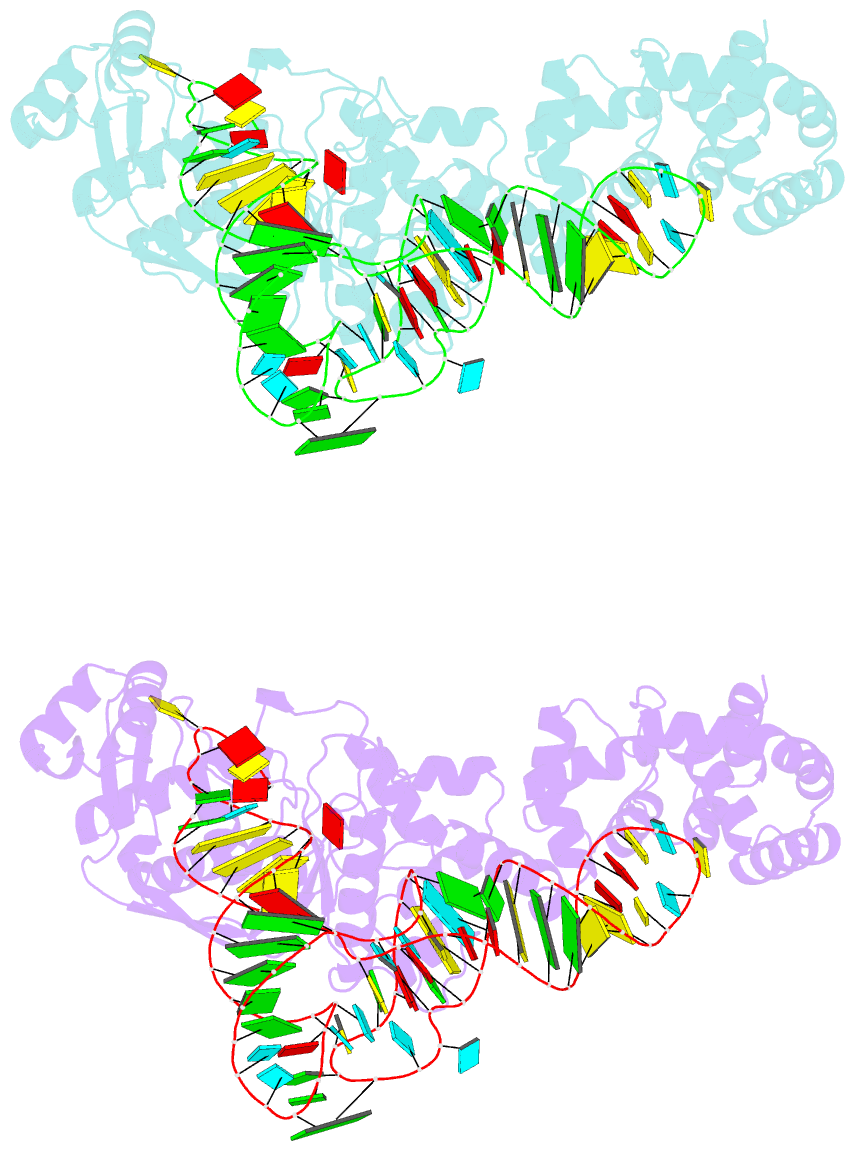Summary information and primary citation
- PDB-id
- 2cv2; SNAP-derived features in text and JSON formats;
DNAproDB
- Class
- ligase-RNA
- Method
- X-ray (2.69 Å)
- Summary
- Glutamyl-trna synthetase from thermus thermophilus in complex with trna(glu) and an enzyme inhibitor, glu-ams
- Reference
- Sekine S, Shichiri M, Bernier S, Chenevert R, Lapointe J, Yokoyama S (2006): "Structural bases of transfer RNA-dependent amino acid recognition and activation by glutamyl-tRNA synthetase." Structure, 14, 1791-1799. doi: 10.1016/j.str.2006.10.005.
- Abstract
- Glutamyl-tRNA synthetase (GluRS) is one of the aminoacyl-tRNA synthetases that require the cognate tRNA for specific amino acid recognition and activation. We analyzed the role of tRNA in amino acid recognition by crystallography. In the GluRS*tRNA(Glu)*Glu structure, GluRS and tRNA(Glu) collaborate to form a highly complementary L-glutamate-binding site. This collaborative site is functional, as it is formed in the same manner in pretransition-state mimic, GluRS*tRNA(Glu)*ATP*Eol (a glutamate analog), and posttransition-state mimic, GluRS*tRNA(Glu)*ESA (a glutamyl-adenylate analog) structures. In contrast, in the GluRS*Glu structure, only GluRS forms the amino acid-binding site, which is defective and accounts for the binding of incorrect amino acids, such as D-glutamate and L-glutamine. Therefore, tRNA(Glu) is essential for formation of the completely functional binding site for L-glutamate. These structures, together with our previously described structures, reveal that tRNA plays a crucial role in accurate positioning of both L-glutamate and ATP, thus driving the amino acid activation.





